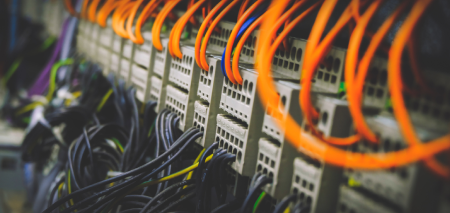PLCs, commonly referred to as programmable logic controllers, are reliable industrial electronic devices for various mechanical systems and application control.
How widespread are PLCs, and why are they so crucial?
Well, PLC systems can be found everywhere in our highly technological world, from industries to office spaces to the traffic signals on the streets. Because they are so effortlessly and unnoticeably incorporated into our daily lives, PLCs are at the core of the control of numerous vital technologies that most of us don’t even give a second thought to.
In the following examples, PLCs are used to control mechanical systems in everyday life:
Road Traffic Signals
Without traffic signals, it’s challenging to imagine our modern world. People around the globe are familiar with and use those three streetlight colours. Since its initial use for traffic control in 1926 in London, England, the PLC has had a lengthy history in large cities and little villages worldwide. These traffic lights, which we frequently take for granted, are monitored and managed by PLC hardware and software, which operates stably and smoothly around the clock, 365 days a year.
Have you ever observed that travelling during rush hours on a busy street is a completely different experience than during times of low traffic? How would it impact the flow of automobiles if a pedestrian at an intersection pressed the crosswalk button? When traffic lights enable them to drive through an intersection, are emergency vehicles genuinely seen? Traffic flow is coordinated and managed using emergency vehicle transponders, sensors, and plc circuits to control the traffic lights, enabling more prompt and focused rescue assistance.
The Automatic Car Wash
Gas stations sometimes come with automatic car wash systems in crowded cities with heavy vehicle traffic. The water mixed with cleaning agents will blast the car’s surface as you move around inside the touch-free carwash, and the wipers will rotate to scrape the surface. Every step of the process is calculated and meticulously managed, down to how many litres or gallons of soap are used and how long those tall revolving wipers spin. PLCs entirely automate these labour- and time-saving services, requiring only a button press at the entrance from humans.
The Elevator
The elevator business is expanding. No matter how little or large, an elevator is found in every multi-story building. But there are chances it can go in the wrong direction sometimes. Have you ever wondered who or what is causing this? To give you a hint, an established software now running in a PLC recognises the various floors that are making elevator requests and directs the elevators in the appropriate direction. The lift’s PLC is loaded with these programmes, which are collections of ladder logic instructions. Typically, the controllers are not situated inside the elevator but at a specified spot on the building’s top or in a neighbouring control room. The majority of elevators use PLCs to programme and control them. These PLCs are set to take the fastest path through pending button calls and base their directional decisions on that.
Automatic Doors
For a long time, the automated door swinging open was nothing less than a source of injury. Fortunately, modern PLC controls have improved built-in sensors on both sides of the door to stop this from happening. There are numerous ways for an automatic door to work, but in general, they do so by employing a detector, such as one that detects when a light beam is disrupted, to identify objects in front of or between the doors.
Conveyor Belts
The conveyor belts in supermarkets and shopping malls allow the projects to move along the line, making it easier for the cashier to carry out the billing process. Imagine the inconvenience if a worker wasn’t there to help regulate the belt and make the checkout process quick and easy. In airports, larger conveyor belts move people or place luggage on luggage carousels until the owner picks it up. Even enormous conveyor belts exist to move building supplies. Due to their practicality and consistent motion, conveyor belts are also utilised in most production facilities.
Roller Coasters
Although roller coaster rides can be scary, the thrills can be unparalleled. In roller coasters, the PLC control is typically used to raise the ride before the major drop. Additionally, it serves as a safety measure to prevent cars from turning around. It wouldn’t be as exciting to fall as moving forward on the steep fall.
These days, PLCs regulate equipment that supports our high-tech lifestyles almost wherever you look. Our lives are made better by the strong and dependable control systems they offer us, from traffic signals to roller coasters. The maintenance and support of these systems are done by PLC specialists, who offer a vital service that keeps us safe and moving through our busy lives.


